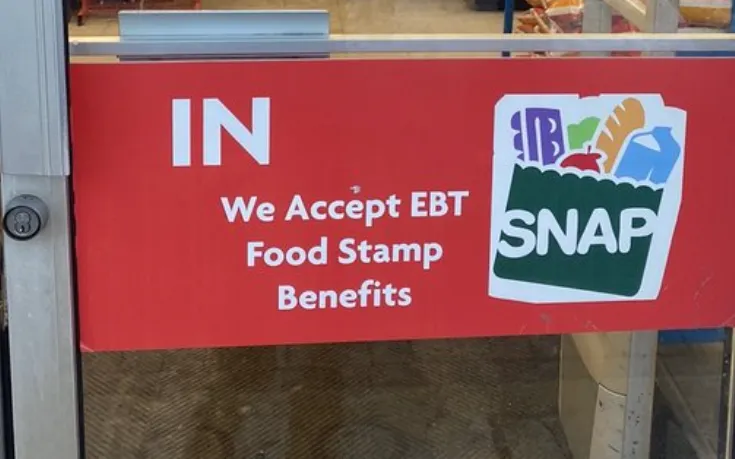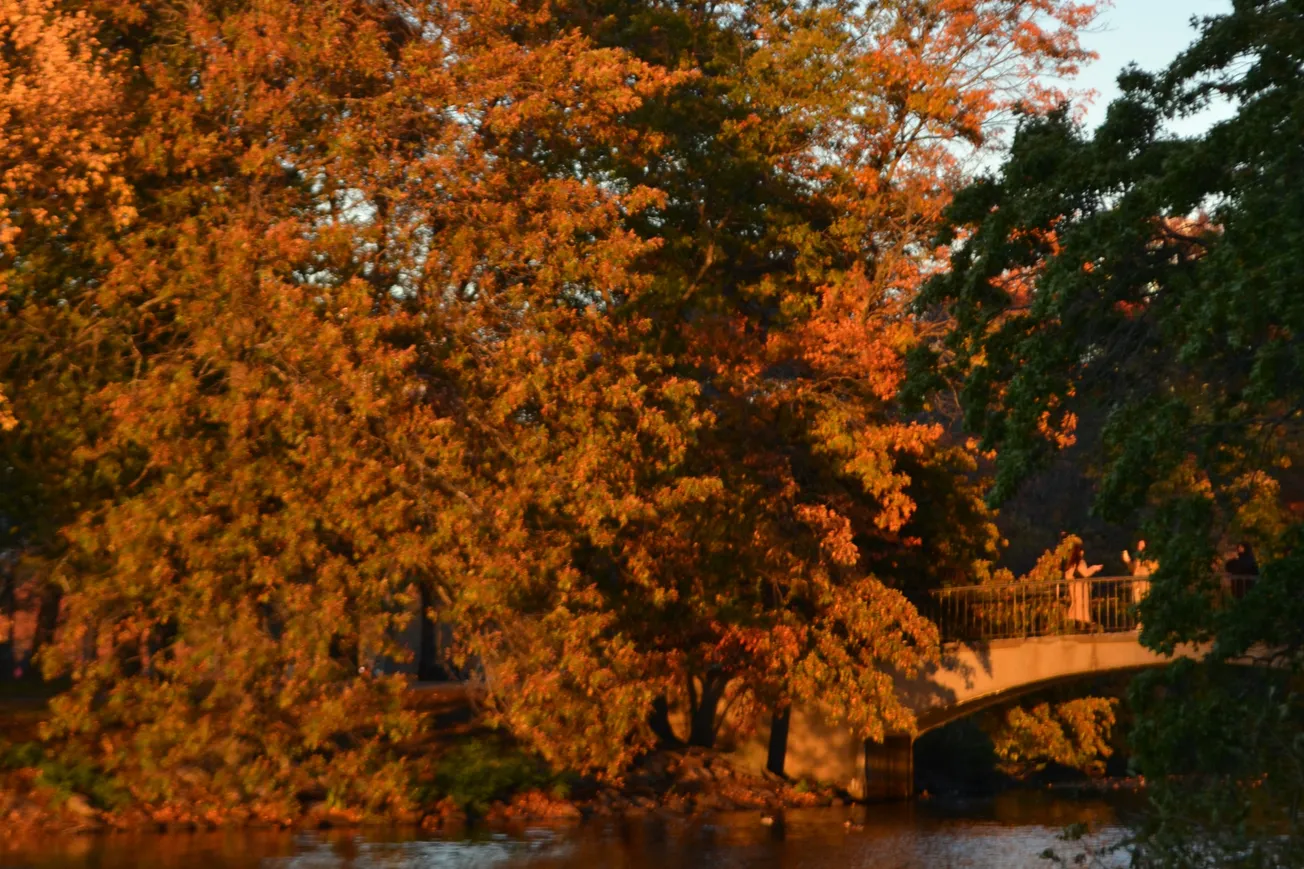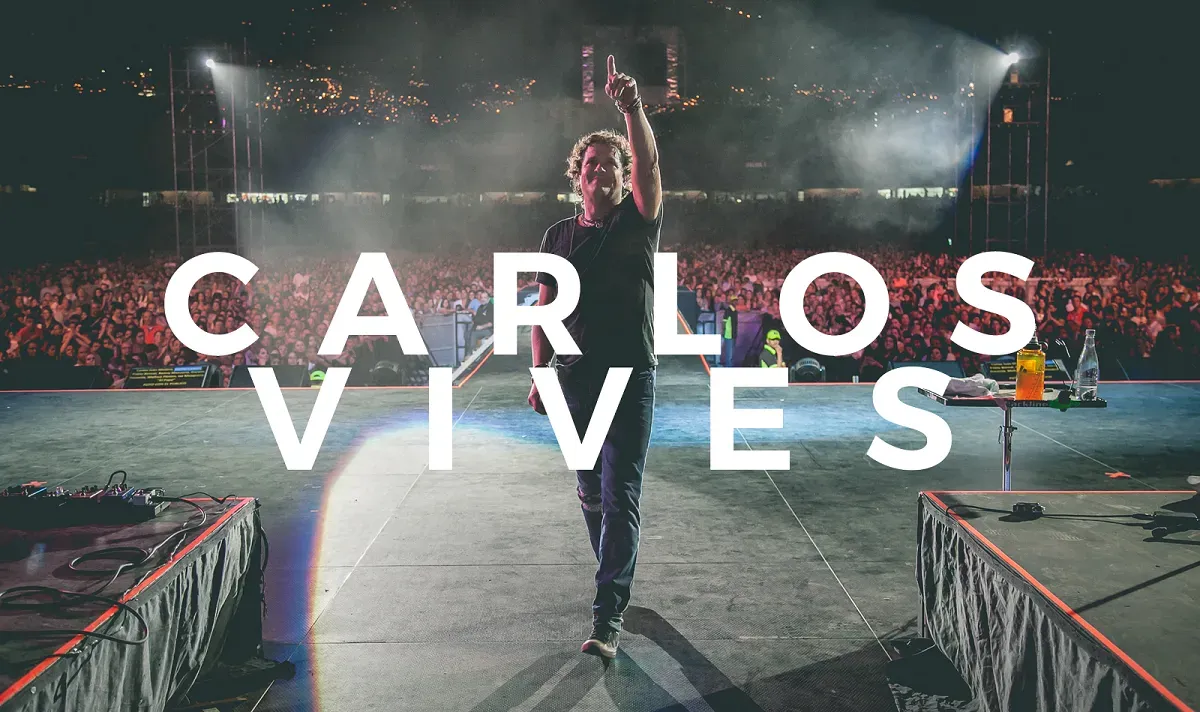A bag on his back, like his grandmother and mother -with whom he was traveling-, was what Venezuelan Ehisler Vásquez carried when he first stepped onto the only pedestrian migratory bridge assigned to two shelters in Reynosa, Mexico, one of them called «Senda de Vida» (Path of Life). There he would have to wait to be signed up on a migration list for almost 45 days.
Youtube
Entrevista exclusiva
The total ignorance of the process he had to follow in order to apply for asylum on the southern border of the U.S. was not an obstacle for him and his family. They decided to start a journey that perhaps they never imagined carrying out while living in Venezuela, a prosperous and stable Caribbean nation with the largest oil reserves in the world -at least about 309 billion barrels, according to statistics from the World Factbook of the United States Central Intelligence Agency (CIA) for January 2018.
Despite this, Venezuela’s main export product today, amidst the greatest humanitarian crisis in the hemisphere, is its own desperate citizens in search of a better life. This is what the UN Refugee Agency (UNHCR) and the International Organization for Migration (IOM)’s reports on the number of Venezuelan migrants show, which reached four million last year.
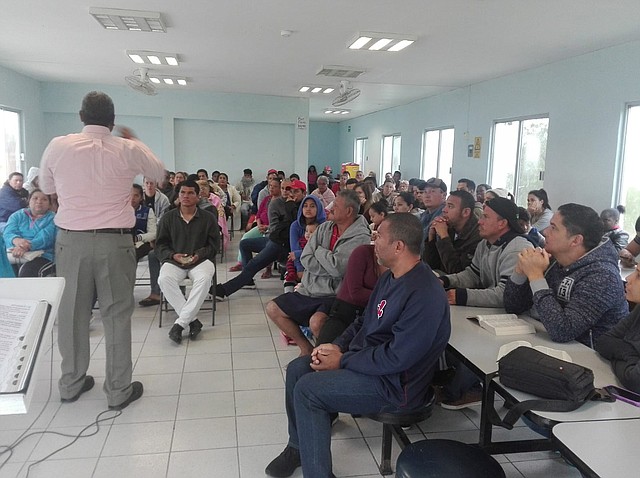
ETL – Courtesy
REFUGE. A group of immigrants come together at the “Senda de Vida” refuge in Reynosa, México.
It is a factory of emigrants, constituted by forcibly displaced people. Some have less economic resources and leave through the borders of neighboring countries with long stretches of road (the nations of Latin America host the majority); and others have the possibility of at least buying a plane ticket, such as Ehisler. In spite of it, he did not enter the U.S. as many of his connationals do, with a tourist visa, because he only had a student one.
So he decided to cross overland. He first flew to Chile, where his mother and grandmother were. After passing through several airports, he ventured into another world of unknown migratory flows (parallel to its borders in South America) between Mexico and the United States. A harsh reality awaited him.
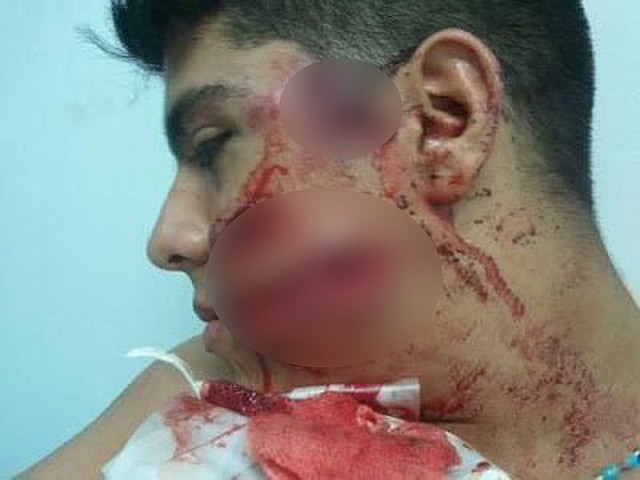
ETL – Courtesy
INJURED. Security forces of the Maduro regime shot five pellet bullets to Vásquez face and three to his back in a 2013 protest. *This picture has been published with the authorization of the victim.
“The only thing from our belongings that remained in our hands were our phone charger cables, cell phones, and some books. We surrendered the rest of our things to start the process of an initial interview through which they begin to obtain information about who you are and how you arrived to the United States, because it’s true that many people have been paying coyotes to pass them through means other than the regular channels.”
A shelter in the open
The 26-year-old Venezulean is the co-founder of the NGO Fuerza, Unión, Justicia, Solidaridad y Paz (Strength, Union, Justice, Solidarity, and Peace -FUNPAZ, per its acronym in Spanish) in Barquisimeto, Venezuela. He was a victim of the repression by the Nicolás Maduro regime in 2014.
Once he arrived at the “Senda de Vida” (Path of Life) shelter in Reynosa, Mexico, he realized he had to put his name down on a long list so he could be taken to the U.S. immigration authorities, and then wait hours to know if he could remain in a place that was clearly collapsing.
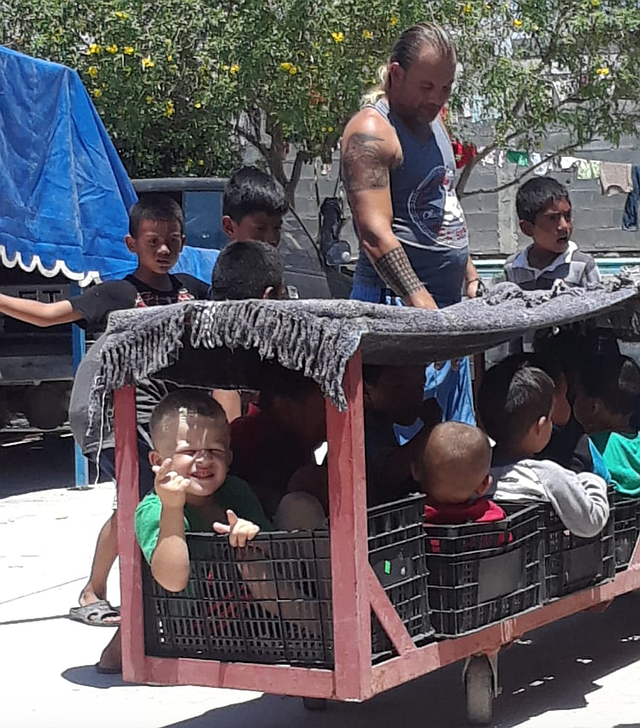
ETL – Courtesy
KIDS. A group of neighboring kids are transported in the Reynosa refuge.
«To my surprise, I found hundreds of people, some of them Venezuelans, who were in the same process to reach the U.S. Nonetheless, the initial response they gave us was that the shelter was full, but after about four hours they said: ‘look, there is some space over there, buy some tents so you can stay”.
He did precisely that, fearing that something bad could happen to them because they had heard the area was dangerous. They established their camp right next to where the wood was cooked, outdoors.
“We contracted respiratory diseases. The smoke was breathed in by those who slept outside. People arrived every day, and every day it filled up more. But for a month no one else entered. No one passed by, no one knew what was going to happen. We had to constantly look for food because there was neither fridge nor how to preserve it. Others would go to sleep at hotels in nearby areas, keeping their names still down on the list. The part of the church serving as a refuge had about eight rooms and already housed between 40 and 50 people at its maximum capacity. Others slept in common areas.”
He saw children who were sick, in really inhumane conditions, around him. Ehisler remembers with pain the death of a mother who arrived at the refuge with her two children. She was hospitalized, but never returned. The children stayed in the shelter, while he, his mother and grandmother were already leaving for the border. With that news and that image, he said goodbye to Mexico in a pastor’s vehicle, under conditions different than those awaiting him on American soil. The most painful part was yet to come.
Before leaving, he raised his voice for the community and even contacted local media to denounce the precarious situation of the place. During his stay he met people of 22 nationalities, according to his own count. His estimate suggests that just in that refuge 50% were Cuban, 25% Venezuelan, and the rest were Mexicans and Central Americans. In total, there were between 450 and 500 people, including those who slept outside the place, all sharing a goal: to cross the border and step on American soil.
A new route for Venezuelans
“I know the reality of Venezuela well. Seeing Venezuelans’ suffering and hearing regrettable situations, such as those who had their husband or children killed and who were fleeing the same persecution by the dictatorship, was a pattern I constantly heard: ‘Look, I came because they killed my husband and came to my house, or because the colectivos (paramilitary groups armed by the regime) started shooting at my house.”
The young human rights activist noted that Venezuelans who arrived at the shelter generally had already been to the U.S. before, but had no plans to return. The truth is that this experience is part of a new unknown route that those fleeing the Maduro regime decided to take as another option, beyond those they can find in neighboring Latin countries.
The number of Venezuelans he was able to cohabitate with both at the shelter and at his future detention center did not represent the majority (there are still no official figures on the number of Venezuelans crossing the southern border). However, the fact that a quarter of the shelter’s population was from Venezuela reflects the figures that the U.S. Citizenship and Immigration Service (USCIS) made public regarding Venezuela being at the top of the list of countries applying for political asylum in January 2019 -2,064 applications received, above Guatemala and China in second and third place, respectively.
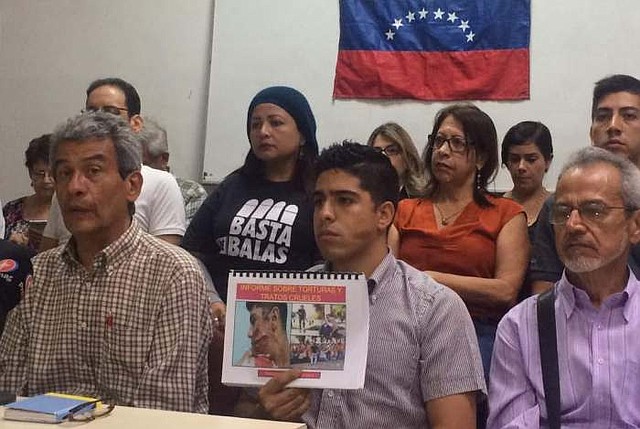
FUNPAZ AC
SUPPORT. More than 50 Human Rights NGO’s stand by Vásquez, who denounces the raid of his home in Barquisimeto, Venezuela, by government forces in 2017.
The same pattern repeated in Venezuela’s case in 2017 and 2018. Both years, it dethroned China from the first place in asylum requests for a consecutive decade (20% and 27% of total applications).
Handcuffed by the feet, hips, and hands
Ehisler, a publicist by profession and a pro-human rights activist in his native city, never thought he would wear a detention uniform and handcuffs in the United States. In Barquisimeto, protesting before the National Electoral Council (CNE, per its acronym in Spanish) after Nicolás Maduro fraudulently won the presidential elections, resulted in the regime’s security forces lashing out at his humanity and shooting five pellet shots straight to his face, which caused the area of one of his cheeks to be disfigured. Three other shots went to his back. The photos immediately became viral on social media.
In spite of that, together with other victims of the protests he created FUNPAZ and continued to fight against the regime, until the persecution left him no choice but to emigrate. He came to the United States because the rest of his relatives were here.
On May 10, 2019 at 5:35 pm, Mexican migration officials handed him and his relatives to the U.S. authorities. They were separated because women had to go to a different detention center than men.
“We arrived at a place called ‘La Hielera’ (The Freezer). It’s a very cold place. Some images of the overcrowding that exists there have surfaced. It’s also collapsed. There were people who had a kind of aluminum foil that they used to cover themselves from the cold, but most people shivered after spending days there without bathing. I lasted four days. There, you can’t speak loudly, you know that you constantly have someone there telling you to be silent and not to lie down. We would sleep sitting up, which was very difficult to do because of the cold and the feeling of it penetrating your bones.”
Breakfast, lunch, and dinner were fist-sized burritos wrapped in foil; sometimes with a bottle of water, sometimes without liquid. The first interview he faced lasted about an hour. “One of the officers asked me: Ehisler, why were you protesting in Venezuela?’ I told him I was doing it to demand rights. ‘No, don’t protest,’ replied the official. That was something like: Don´t tell me to not do it because I know that is a Constitutional right. Words like those began to make noise in my heart because we do not come here because we want to, but because we are obliged to do so. We go out in fear that something will happen to us, that we will be killed or put in prison, or that something will happen to our family.»
“After leaving the interview, they put us in a fully armored van and take us to a detention center. We didn’t know anything, absolutely nothing of what was going to happen. We didn’t know anything about the detention center they were sending us to. We knew there was a file opened. They don’t give you a suitcase, but rather a transparent bag with your basic items (cell phone, headset, charging cables, and some books I carried). The rest of your things stay there. Immigration officers ask you to take off your shoelaces and then they put you in the car.”
He rode in the car for about three hours and went through three detention centers: first Puerto Isabel; then El Valle; and then the Prairieland Detention Center, Texas, where he served the rest of his 90 days until he was given parole, with which he and his relatives were able to leave while their case is still being processed.
“They handcuff your hands, hips, and legs. We were all handcuffed and very hungry. There were some sandwiches in the car, but the officer could not pass them back. He said: ‘Pick them up from one of the seats.’ Imagine us trying to reach for them, all handcuffed and tied up. They couldn’t get close and hand us the sandwiches, even though they knew we weren’t criminals. They had already identified who they brought in that van.”
For this young Venezuelan migrant, being held in that detention center tested his emotions, faith, and moral integrity. “Meeting my family again… I think it was the most beautiful experience of my life, of this process. It’s like drowning and then reaching the shore. It was the best experience.”
He left the detention center more than a month ago and there is still no court date. He does not know where and when it will happen. He only knows for certain that he needs to find a lawyer, but so far he does not have the means to hire one.
Original work in Spanish by Ricardo Sánchez-Silva for El Tiempo Latino
English translation by Marcela Bustillos and Dubraska Vale, Ask A Venezuelan



